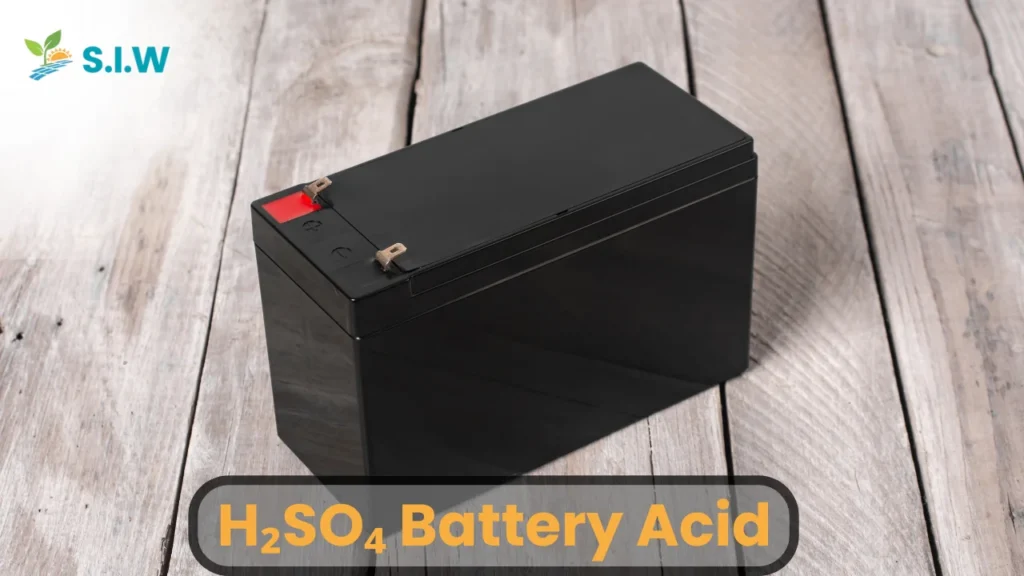H₂SO₄, commonly known as sulfuric acid, is a crucial component in many batteries, especially lead-acid batteries. These batteries are widely used in various applications, from starting your car to storing energy from solar panels. Understanding how sulfuric acid functions in batteries helps us appreciate its importance in our daily lives and renewable energy systems.
What is H₂SO₄?
H₂SO₄ is a colorless, odorless, and highly corrosive liquid. It is one of the most produced industrial chemicals globally, and its uses span many industries. When it comes to batteries, sulfuric acid acts as an electrolyte, allowing the flow of ions between the battery’s plates.
The Role of H₂SO₄ in 12V Solar Batteries
Solar energy systems often rely on 12V solar batteries to store energy generated from solar panels. These batteries typically use lead-acid technology, where H₂SO₄ plays a vital role.
How Does It Work?
When solar panels collect sunlight, they convert it into electricity. This electricity charges the 12V battery, which stores the energy for later use. The battery’s construction includes two lead plates—one positive and one negative—immersed in a solution of sulfuric acid.
- Charging Process:
During charging, lead dioxide (PbO₂) at the positive plate reacts with sulfuric acid to form lead sulfate (PbSO₄) and water (H₂O). Simultaneously, the negative plate undergoes a similar reaction, creating lead sulfate as well. - Discharging Process:
When you use the stored energy, the process reverses. The lead sulfate on both plates converts back to lead dioxide and lead, releasing electrons that flow through the circuit, providing power to your devices.
Benefits of H₂SO₄ in Solar Batteries
- Efficiency:
H₂SO₄ is an efficient electrolyte, allowing for fast ion transfer, which helps the battery charge and discharge quickly. - Cost-Effectiveness:
Lead-acid batteries are generally less expensive than other battery types, making them a popular choice for solar energy storage. - Recyclability:
Lead-acid batteries are highly recyclable, with most components, including sulfuric acid, being recoverable.
Solar Panels and H₂SO₄ Battery Acid
Solar panels convert sunlight into electricity, but they need a reliable energy storage system, like a 12V battery, to ensure you have power when the sun isn’t shining.
Connection Between Solar Panels and Batteries
When sunlight hits the solar panels, it generates direct current (DC) electricity. This current flows to the battery, where the H₂SO₄ electrolyte plays a crucial role in storing that energy.
Energy Storage in Solar Systems
Let’s say it’s a bright sunny day, and your solar panels are producing energy. Here’s how the process works:
- Charging the Battery:
The DC electricity from the panels charges the battery. The H₂SO₄ solution in the battery allows the lead plates to react, storing energy in the form of chemical energy. - Using the Stored Energy:
At night, or on cloudy days, you can draw power from the battery. The stored energy converts back into electricity, thanks to the same chemical reactions that occurred during charging.
Solar Panels and Battery Integration
Commercial solar panels combined with H₂SO₄ batteries offer businesses a way to manage energy costs effectively.
Benefits for Businesses
- Reduced Energy Costs:
By storing energy generated during peak sunlight hours, businesses can use that energy during peak demand times when electricity rates are higher. - Reliability:
Having a battery backup ensures that businesses can operate smoothly, even during power outages or fluctuations in the grid. - Sustainability:
Using solar panels and batteries helps businesses reduce their carbon footprint and contribute to a more sustainable future.
Real-Life Example: My Experience with Solar Energy
I remember when my family decided to install solar panels on our roof. At first, I was skeptical about how effective they would be. However, after learning about the role of H₂SO₄ in our battery system, everything started to make sense.
We opted for a 12V solar battery to store energy. The first sunny day, we watched our solar panels generate electricity and charge the battery. Later that evening, we were able to run our lights and appliances with the stored energy. It felt amazing to know we were harnessing sunlight and using it to power our home!
FAQs about H₂SO₄ Battery Acid
- What is sulfuric acid used for in batteries?
Sulfuric acid serves as the electrolyte in lead-acid batteries, allowing the flow of ions between the positive and negative plates to store and release energy. - Can sulfuric acid batteries be recycled?
Yes, lead-acid batteries, including those containing sulfuric acid, are highly recyclable. Most components, including the acid, can be recovered and reused. - What are the benefits of using H₂SO₄ in solar batteries?
H₂SO₄ is efficient, cost-effective, and recyclable, making it ideal for use in 12V solar batteries for energy storage. - How does solar energy charge a lead-acid battery?
Solar panels convert sunlight into electricity, which flows to the lead-acid battery. Sulfuric acid in the battery facilitates chemical reactions that store energy. - What happens to sulfuric acid when the battery is discharged?
When the battery discharges, the lead sulfate formed during charging converts back to lead and lead dioxide, releasing electrons that provide power.
Summary
Understanding the role of H₂SO₄ battery acid is crucial in the context of solar energy systems. From 12V batteries to commercial solar panels, sulfuric acid ensures efficient energy storage and usage. By leveraging solar power and lead-acid battery technology, we can create a more sustainable and energy-efficient future.
If you’re considering solar energy solutions for your home or business, understanding H₂SO₄’s role can help you make informed decisions. Embracing solar technology not only benefits you but also contributes to a greener planet.








